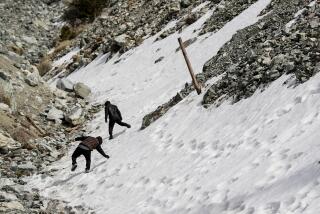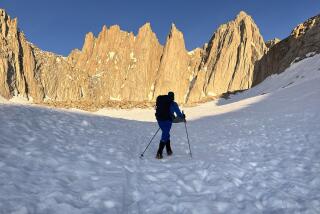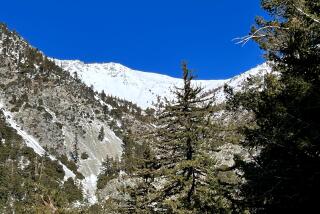The Height of Inaccuracy
Here’s a little something to watch out for these days if you’re into the outdoors much and read other publications. It seems that Britain’s largest-selling hiking magazine, Trail, published a little mistake in its latest issue. It concerns Scotland’s Ben Nevis, at 4,406 feet the tallest peak in Britain. It is notorious for claiming the lives of climbers in its rapidly changing weather and in difficult descents under any conditions. Naturally, confronting imminent death in freak storms on slippery rocks at great heights is a big attraction to Britain’s mountain-climbing crowd. Also, it clears your sinuses.
So as a public service in its February issue, Trail magazine thoughtfully printed directions on how to safely get your freezing tail down out of a freak storm at the summit of Ben Nevis. However, if you follow the respected magazine’s decent descent directions in a sudden storm, you will walk right off the north face of the mountain to plunge through howling winds and freezing rain to a surprising but very sudden death.
Trail’s editor, Guy Procter, acknowledged and apologized for the embarrassing mistake. Last year some mountain rescue units criticized the magazine’s report that three popular mountain hiking trails were snow-free in winter when, in fact, they often were not. Procter said the magazine printed some 200 suggested routes annually and this was the first such error. Or the first reported, anyway.
In its Ben Nevis directions, the magazine inadvertently erased the first of two crucial bearings needed to safely climb down. Procter blamed copy editors. Other publications, for instance newspapers, invest in company kitchens to test recipes in advance. If a birthday cake recipe ends up tasting like salmon, corrections can be made before publication. Here’s a thought: Perhaps Trail should assign copy editors to follow their edited field directions before publication. If those folks don’t return, the boss will know there’s a potential accuracy problem.
Scotland’s Mountaineering Council rushed an alert about the mistake onto its website. “Getting off Ben Nevis is probably one of the most infamous navigational tasks in the British Isles,” said Roger Wild, a council spokesman. “Anyone following that route in poor visibility and with snow cover could easily have walked straight off the edge.”
Trail’s Procter says, perhaps a tad hopefully, that the magazine’s surviving readers are usually experienced climbers, that Ben Nevis has a high technical rating to deter novices and no climber would ever depart without a good map. Still, it’s not the best way for a publication to maintain its circulation numbers.
More to Read
Sign up for The Wild
We’ll help you find the best places to hike, bike and run, as well as the perfect silent spots for meditation and yoga.
You may occasionally receive promotional content from the Los Angeles Times.






